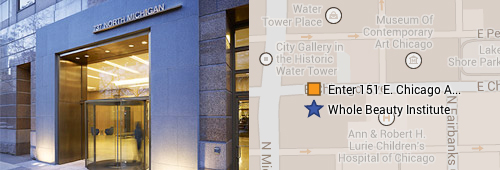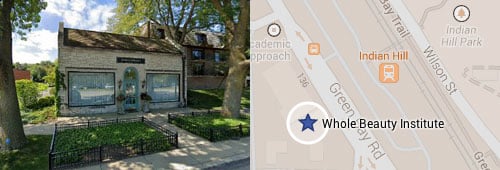Why Dr. John Q. Cook Is the Right Body Surgeon for You
Education and Credentials

Awards and Recognition

REAL PATIENT RESULTS
See the difference experience makes. Scroll through before and afters in the photo carousel of tummy tuck patients treated by Dr. Cook and his team.
Tummy Tuck
Slim and Refine Your Waistline and More with Abdominoplasty Surgery in Chicago and Winnetka
A firm, flat, and toned abdomen is considered by many people to be a highly desirable look. However, genetics, lifestyle, and major life events—such as pregnancy or significant weight fluctuations—can negatively impact the appearance of the abdomen. Body contouring with an abdominoplasty, also known as a tummy tuck, in Chicago and Winnetka with Dr. John Cook can help patients to achieve a better-proportioned figure and improved their self-confidence.
A tummy tuck or abdominoplasty is a powerful surgery that provides transformative results. Once an operation that was merely concerned with tightening skin, the tummy tuck has advanced in 2024 to a point where it allows for individualized solutions for many different body types.

Want more advice about what to expect from a tummy tuck in Chicago or Winnetka? Contact Whole Beauty® Institute to request a consultation. Call 312-751-2112 or send a message online.
Request a consultWhat Is a Tummy Tuck?
You may be wondering, “What does a tummy tuck do?”
A tummy tuck is a cosmetic surgery that enhances the shape and appearance of the abdominal area. It is mainly focused on addressing excess skin and separated or weakened abdominal muscles, but a tummy tuck can also involve removing excess fat on the stomach area. The goal of a tummy tuck is to tighten or reshape the abdominal area to provide a more aesthetically pleasing, slimmer, toned, and firmer appearance.
During the tummy tuck procedure, excess skin and fat are removed, the connective tissue is tightened, and remaining skin is repositioned to create a firmer-looking appearance. Dr. Cook’s choice of surgical technique and the patient’s lifestyle after their tummy tuck will affect how the abdominal area looks after the surgery.
Our Approach to Tummy Tuck Surgery
In more than 25 years of practice, Dr. John Cook has developed a reputation for his innovative techniques that refine and rejuvenate the form of the body in ways that preserve each patient’s unique natural identity. It’s important to remember that there is no single technical solution to abdominal contouring. Each tummy tuck is personalized based on the patient’s needs, and there are several types of surgical techniques available. This is not a “one size fits all” procedure.
What Can You Expect from a Tummy Tuck Consultation?
Any plastic surgeon offering tummy tuck surgery must first gain an understanding of the events that brought a specific abdomen to its current shape. Has the patient gained or lost significant weight, and, if so, how many pounds does the weight fluctuate? Was there one major fluctuation or many? What is the patient’s pattern of exercise? For women, have there been any pregnancies—or are any pregnancies planned for the future?
Dr. John Q. Cook and his entire team at the Whole Beauty® Institute are committed to a holistic approach to body contour surgery. If we understand the circumstances that brought the patient to their current shape, we will be able to design a custom plan in which individualized surgery—including tummy tuck—nutrition, and exercise unite to provide an optimum long-term result.
Who Is an Ideal Candidate for a Tummy Tuck?
Dr. Cook will help you decide whether a tummy tuck is the most suitable choice for you based on your goals. Generally, ideal candidates for tummy tuck surgery have similar characteristics or aspects of their physique they would like to improve, such as loose, hanging, or sagging skin on the stomach area, separation of muscles on the abdominal area that causes a protruding appearance, or some stubborn, diet-resistant fat on the midsection. The best candidates for tummy tuck surgery will generally be individuals who are physically healthy and at a stable weight, maintain realistic expectations, and are non-smokers.
Can Abdominoplasty Work for Visceral Fat?
There is one important aspect of abdominal contour that no current surgical technique can impact: visceral fat. In some patients, a major cause of abdominal disproportion is intra-abdominal fat or visceral fat, which lies deep and close to the organs. When some patients gain weight, they disproportionately store fat within the abdomen. This pattern of weight gain is determined largely by genetics, but also by nutritional factors. It is a particularly dangerous form of weight gain since it seems to be accompanied by a significant increased risk of heart disease. A tummy tuck can only remove subcutaneous fat, which is the soft, pinchable fat directly below the skin and above the abdominal wall muscles. The only way of reducing visceral fat would be with healthy lifestyle changes.
Once a patient commits to surgery, the pending tummy tuck can serve as a wonderful motivator to lose dangerous visceral fat before the procedure. As the patient loses weight, the skin will hang looser. While this might have discouraged the patient in the past, it can be easier to accomplish the desired weight loss if he or she knows that the tummy tuck will correct the loose skin.
There is no question in our minds that for our patients who have used a tummy tuck as motivation to lose the deep intra-abdominal fat, the surgery has been a life-altering—even a lifesaving—procedure!
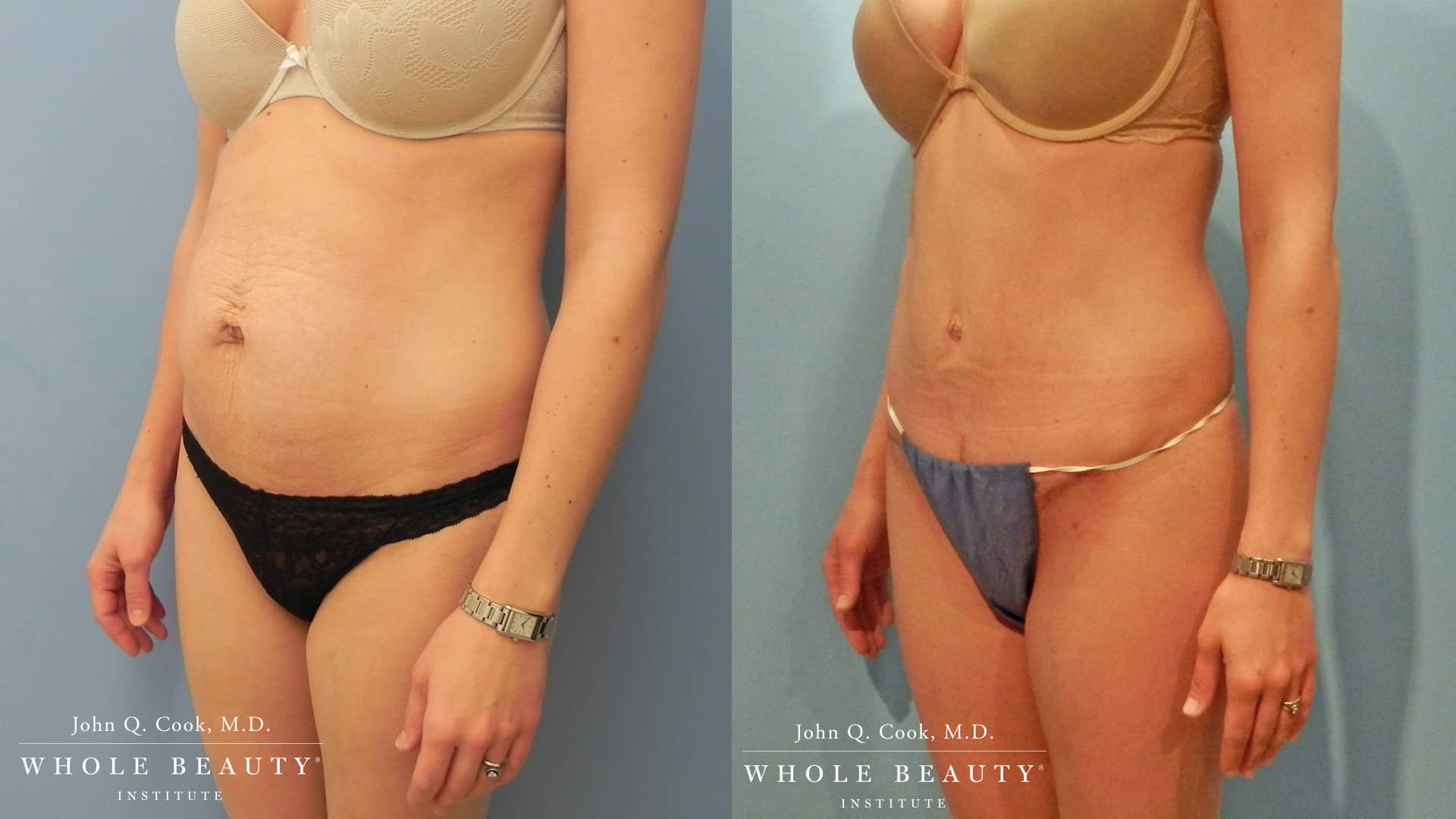
Tummy Tuck before and after performed by John Q. Cook, M.D.
What Are the Most Common Reasons Why Patients Get Tummy Tucks?
People come to see Dr. John Q. Cook at the Whole Beauty® Institute for tummy tuck consultations for a variety of reasons.
Changes After Pregnancy
Women with post-pregnancy changes are typically delighted by the improvements that result from a tummy tuck. We recommend that a woman have a tummy tuck only when she is fairly certain that there will not be any future pregnancies, since the stretching of the abdomen that comes about as a result of pregnancy will undo a good portion of the benefits of a tummy tuck surgery.
Changes After Previous Surgery of the Abdomen
The problem may be a widening of the space between the rectus muscles (diastasis) or a more general loss of support. Very often, the three-layer repair that occurs with the high lateral tension abdominoplasty can restore good tone to the abdomen.
There are often powerful physical benefits for these tummy tuck patients, since the abdominal musculature is intimately involved in posture and back comfort. Using a tummy tuck to restore the normal dynamic balance of the abdominal muscles significantly improves the patient’s quality of life.
Abdominal Scars
Significant Weight Loss
Patients who have lost a large amount of weight are often frustrated by the poor tone and loose skin that remain in the abdomen despite their very best efforts to get rid of it. They are disappointed that beyond a certain point, the abdomen may be thinner, but actually look worse as the overhang of the skin becomes more pronounced.
For these patients, a tummy tuck can serve as a wonderful reward for their efforts. When a beautiful shape is restored to the abdomen with tummy tuck surgery, it can serve as a powerful motivator to maintain healthy habits of nutrition and exercise.
Loss of Elasticity After Liposuction
Some surgeons seem to feel that liposuction is a contest to see how much fat can be removed. This is typically not a contest in which the patient wins! The primary purpose of any surgical fat reduction (classical, ultrasonic, Vaser®, or any other variety) is to obtain a beautiful contour.
When a significant amount of fat is removed—and nothing else is done—the result will almost always be disappointing. Although the bulk of the fat will be reduced, the skin will now hang loose.
Patients who experience this sort of post-procedural looseness in the abdomen or in other regions can be restored to balance with a well-performed tummy tuck or other body contouring procedure.
Excess Mid-Body Fat and Loose Skin
Dr. Cook provides several versions of this tummy tuck combination, but all are influenced by the basic concept of the high lateral tension technique: Limited skin undermining (other than in zones that are to be removed) allows for liposuction to be carried out with a reasonable level of safety. Patients with a classic mid-body excess may be very trim in other areas, such as the arms, legs, and face, so a midbody sculpting of this nature can restore a pleasing artistic balance to their physical form.
Dr. Cook carefully examines prospective tummy tuck patients with mid-body excess to determine whether the true problem is intra-abdominal fat, since this must be addressed with diet and exercise.
Gradual Loss of Abdominal Tone Due to Aging
An Unbalanced Physique
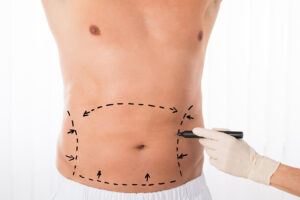 A tummy tuck can be applied to men and women with a variety of physiques. One particular type of tummy tuck patient who deserves special consideration is the woman with a fuller, curvaceous body who is pleased with her lines—except for those of the abdomen. This is often because the abdomen has been stretched out by pregnancy. With the high lateral tension technique, it is possible to bring the abdomen into artistic balance with the rest of the body.
A tummy tuck can be applied to men and women with a variety of physiques. One particular type of tummy tuck patient who deserves special consideration is the woman with a fuller, curvaceous body who is pleased with her lines—except for those of the abdomen. This is often because the abdomen has been stretched out by pregnancy. With the high lateral tension technique, it is possible to bring the abdomen into artistic balance with the rest of the body.Tummy Tuck for Men

Ready to discover more about a tummy tuck in the Chicago area? If you would like more information about this procedure, please call 312-751-2112 or contact us online to request an appointment.
Request a consultHow Do You Prepare for Tummy Tuck Surgery?
Curious about the dos and don’ts before tummy tuck surgery? Careful planning and meticulous follow-up care are required if you hope to achieve optimal results from your abdominoplasty. Knowing how to prepare for a tummy tuck can also help you to have an improved recovery process.
If you are thinking about having a tummy tuck, the first step you should take is to schedule a consultation with Dr. Cook so that he can explain more about the benefits, what to expect from the tummy tuck procedure, how it works, and how to prepare. He will discuss your medical history with you and your current state of health. In preparation for a tummy tuck, patients will often need to get lab testing or a medical evaluation, adjust how they’re taking certain medications, stop smoking if they currently smoke, and avoid taking medications or supplements that thin the blood such as aspirin or anti-inflammatory drugs. Patients who have been on newer types of weight loss medications will have to discontinue them for a specific period of time around the surgery. It’s also helpful to do your research, achieve and maintain your ideal weight several months in advance of your tummy tuck, and have a plan in place for aftercare ahead of time.
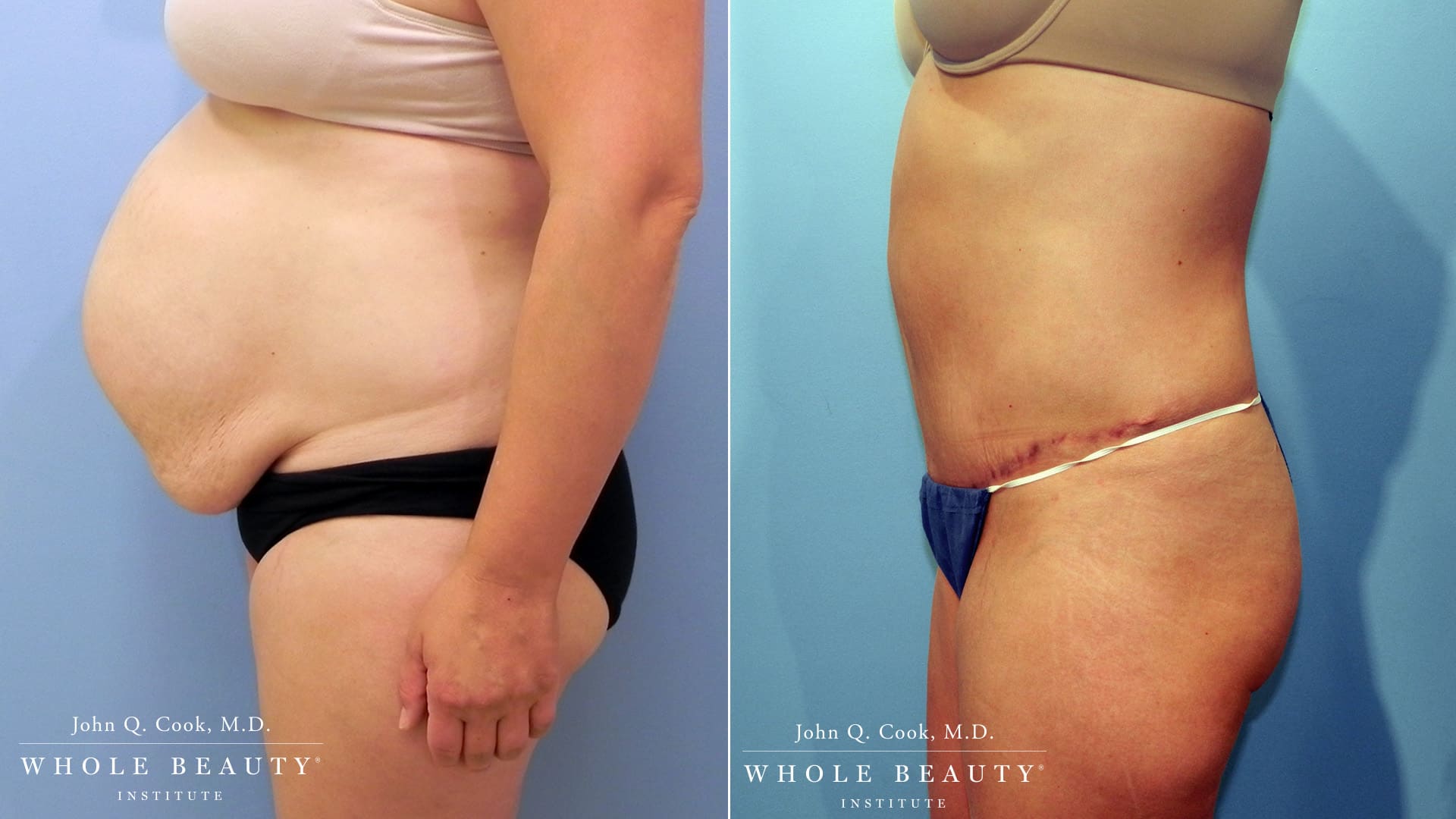
Dr. Cook’s Goals for Tummy Tuck Surgery
When Dr. Cook performs your individualized analysis, he will do so with three goals in mind.
Restore and Optimize Tone with a Tummy Tuck
The tone of the deep fascia and muscles of the abdomen is also very important. Pregnancy or large weight fluctuations may cause the deep anchors of the sit-up muscles to give way, so that the muscles drift away from the midline. This is known as diastasis.
Patients may notice a gap in the central abdomen when their muscles tighten during sit-ups. Unfortunately, no amount of exercise can correct this gap. As the muscles drift to the sides, patients often experience a sensation that the abdomen is not fully supported. Often, an excess curvature of the lumbar spine (lordosis) will develop, which in turn produces back discomfort. A well-performed tummy tuck can help to correct this.
While the tummy tuck procedure will help the tone of the core muscles, there is much that each patient can do to prepare the muscle and deep breast layers for the procedure—and to maintain the long-term benefits of the surgery. We will help you to design a program of core muscle strengthening to prepare you for your tummy tuck, since this will give Dr. Cook the best structure to work with and also make your recovery much easier. A balanced exercise program will help you to maintain an optimum result from a tummy tuck.
Restore and Optimize Contour with a Tummy Tuck
Many tummy tuck techniques leave the patient with an abdomen that is tight in the middle but loose on the sides. The overall visual effect is disappointing in a way that is similar to that achieved by facial skin that is pulled tight in the wrong direction.
In order to avoid this problem, Dr. Cook uses a variation of the high lateral tension tummy tuck technique as pioneered by Dr. Ted Lockwood. With this technique, the distribution of tone is shifted in an oblique direction with significant benefits to the flanks, waist, and upper thighs.
Restore and Optimize Function with a Tummy Tuck
A properly toned abdominal wall is more than beautiful. It is a key element in the dynamic balance of the mid-body. The muscles of the front part of the abdominal wall help to maintain posture and proper position of the spine. When these muscles are weakened or altered in position, the spine tends to shift into a position of exaggerated curvature, which often results in back discomfort.
The importance of the anterior muscles is well known to physical therapists, who often work to strengthen and optimize the mechanics of these muscles in patients with back pain. The gap that develops between the rectus or sit-up muscles in the front part of the abdomen after significant weight fluctuation or pregnancy will derange the proper balance of the mid-body. Once the muscles are out of position, no amount of exercise will be able to restore completely normal function. Patients with a gap between the muscles often experience discomfort and a sense of being unsupported.
A tummy tuck allows for these muscles to return to their normal functional position, and the patient experiences a sense of better abdominal control.
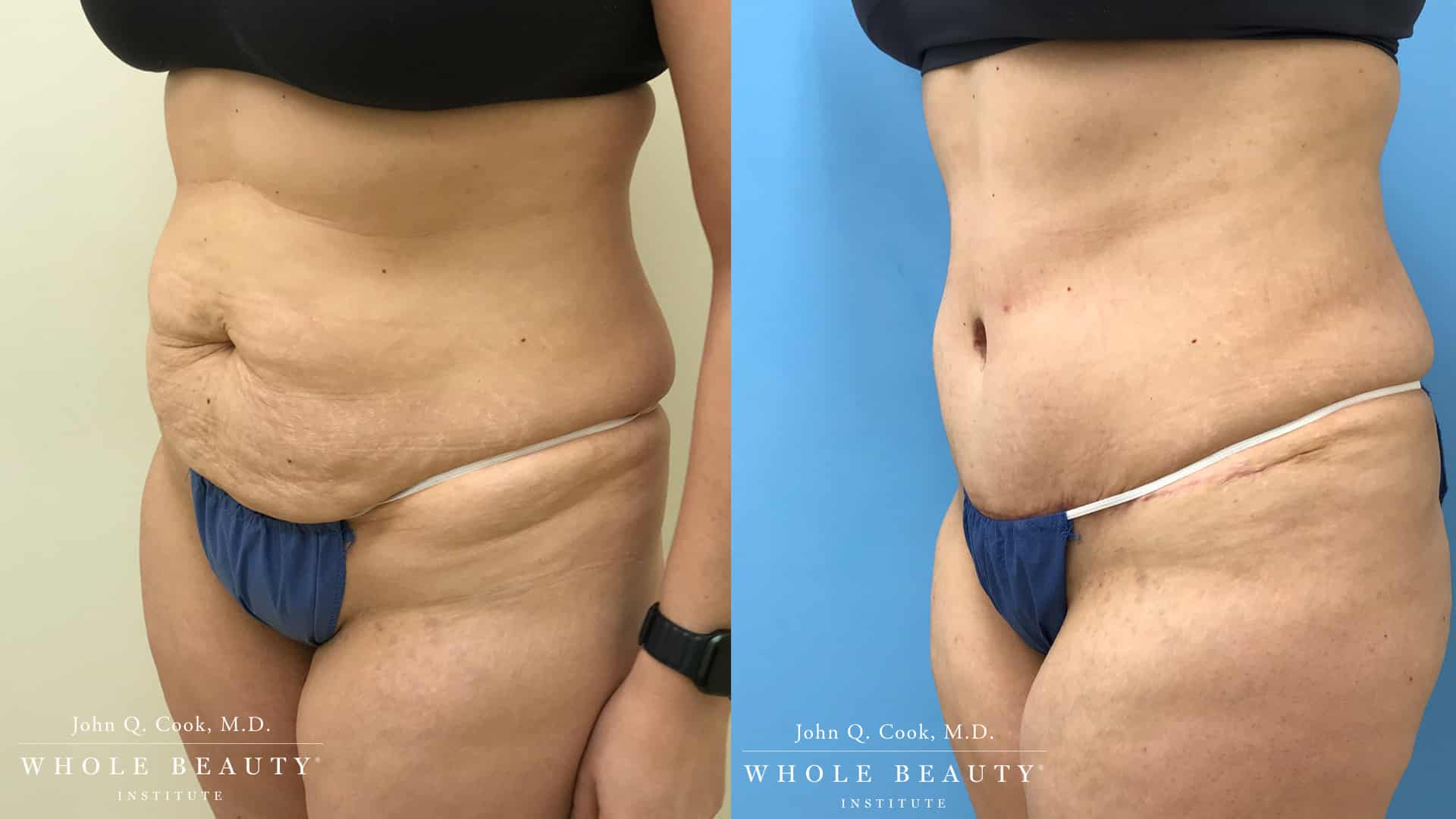
What Are the Different Variations of Tummy Tuck Surgery?
Are there different types of tummy tucks? What is the best method for a tummy tuck? These are some of the most common questions patients have. For a tummy tuck to be successful, Dr. Cook must first analyze the different components that shape the abdomen: skin tone, fat distribution, the strength of the abdominal muscles, and intra-abdominal fat. Each of these components will vary with the individual tummy tuck patient, so it follows that there is no single universal technical solution. Dr. Cook serves his tummy tuck patients best by having a variety of techniques ready to address individual body form variations. Here’s what you should know about the different techniques he uses.
High Lateral Tension Abdominoplasty: The Three Layers of Support
The high lateral tension tummy tuck involves a three layer restoration of abdominal support. The deepest layer involves the sutures that bring the rectus muscles together. Next is a firm layer of tissue known as the superficial fascial system, which forms a layer of support between the skin and the muscles. This layer is extremely important for the quality of the result in that it helps to tighten all of the outer layers of the abdomen. The final layer is the skin.
In the classical form of this tummy tuck, Dr. Cook designs the scar so that it sits low in the bikini area, then curves up toward the hip bones. There is no set pattern to the length of the scar. Specific scar length is determined during the consultation, when Dr. Cook notes the degree of looseness in various zones of the abdomen. In most cases, Dr. Cook can design the incision pattern so that the scar will be covered by the patient’s preferred swimsuit or underwear.
Surgical Techniques for High Lateral Tension Abdominoplasty
During this tummy tuck surgery Dr. Cook will make incisions according to the pattern the patient and he have mapped out. Next, he will undermine the skin and underlying fat in the zone he plans to excise.
He will then undermine a much narrower section in the center of the abdomen that surrounds the umbilicus and continues up to where the abdomen ends at the ribs. He next frees the umbilicus from its attachment to the skin—but leaves it attached internally. This provides a good view of any gap that has developed between the rectus muscles, so that Dr. Cook can restore the muscles to their proper position with precision and security.
A complete repair of the muscles is performed during this tummy tuck surgery, both in the upper and in the lower abdomen. This complete repair is very important, since it prevents the unfortunate bulge that develops in the upper abdomen when only the lower muscles are repaired during a tummy tuck.
Dr. Cook will then determine the optimum amount of skin and fat he will remove from the lower abdomen. This tummy tuck step may involve just a portion of the lower abdominal skin or, when there is significant looseness, the resection may extend to the old level of the umbilicus or even above that. Once the excess skin and fat are removed, the upper and lower borders are brought together so that the scar lies along its planned path along the swimsuit line.
At the time of closure, two important tummy tuck steps are carried out. The new location of the umbilicus is marked on the skin, and the umbilicus is reattached to the skin at that point. Liposuction is carried out in portions of the abdomen, as well as in the flanks. The opportunity to carry out fat reduction at the time of the tummy tuck is an important advantage of the high lateral tension technique.
The Extended High Lateral Tension Abdominoplasty
For patients who have extensive looseness that involves not just the front of the abdomen but the waist and flanks as well, the extended version of this tummy tuck procedure can be very helpful. The scar starts low in the abdomen, then curves up toward the hip bone, then extends toward the back. Recovery is similar to the classical tummy tuck operation.
The Low Scar Variant of The High Lateral Tension Abdominoplasty
Current fashion emphasizes a relatively low cut to swimsuits and other clothing. Dr. Cook has modified the classical tummy tuck operation to meet the needs of patients who wear their clothes at this level. The incisions are designed so that the tummy tuck scar sits at a lower level than it would with the classical high lateral tension abdominoplasty.
The Superficial High Lateral Tension Abdominoplasty
Some patients have lost tone at the level of the skin, but not at the level of the deep fascia and muscles. For these tummy tuck patients, Dr. Cook follows the pattern of the high lateral tension technique for the skin excision, but he does not need to put stitches at the deepest level of the muscles. This results in a much easier recovery for the tummy tuck patient. Just as in the full tummy tuck technique, a precise tightening is accomplished in the outer layers, the superficial system, and the skin. Liposuction can be combined with this tummy tuck technique as in the full operation. For most tummy tuck patients, Dr. Cook will reposition the umbilicus, but when he removes only as small amount of skin, the umbilicus maintains its original position.
Liposuction (Lipoplasty) With Lower Superficial Abdominoplasty
This tummy tuck operation is ideal for the patient who desires liposuction to correct areas of resistant fat in the abdomen and the waist, but who has moderately diminished skin tone in the lower abdomen. Any surgical fat reduction technique alone in a patient such as this will further destabilize the skin tone and potentially result in unattractive wrinkles or folds. Fortunately, there is a good solution to this dilemma. Dr. Cook will carry out a liposuction procedure using the Vaser® or other advanced technology and adjust the skin tone with a limited removal of skin in the lower abdomen. The scar sits low and in many cases can be kept relatively short.
Posterior Body Lift and Outer Thigh Lift
For some patients, there is significant looseness of the body that extends all the way around to the midline of the back. These patients have usually lost significant weight. For motivated patients, a beautiful shape can be obtained around the entire mid body (front, sides, and back) with a two-stage procedure: tummy tuck and lift.
In the first operation, Dr. Cook carries out a high lateral tension abdominoplasty. After the patient has recovered from the tummy tuck, Dr. Cook carries out a posterior body lift, which begins where the tummy tuck left off and ends at the midline in the upper buttock region.
Dr. Cook has found that the recovery from this two-stage procedure is much easier that when the front and back of the body lift are carried out in a single massive operation.
The fat of the abdomen, which lies between the skin and the deep fascia and muscles, is arranged into a number of compartments. The relative distribution of fat in these compartments varies from person to person and is largely influenced by genetics, as well as by whether that person was heavyset in his or her early years. An accurate map of these compartments will serve as a guide for their sculpting during the tummy tuck.
It is important to note that some tummy tuck techniques do not allow for liposuction to be carried out with safety during the procedure. This will significantly limit the power of the result. The high lateral tension technique maintains adequate blood supply to the undermined area of the abdomen, so that liposuction can be an integral part of the tummy tuck.
The tone of the deep fascia and muscles of the abdominal wall (the rectus and oblique muscles) manifests itself in the external shape of the abdomen. The beautiful contours of the mid body of a well-trained athlete are a direct result of the superb tone and function of the abdominal muscles. A more comic example is seen in the cartoon of the out-of-shape middle aged man at the beach who tightens up his abdominal muscles when a beautiful woman walks by.
We have already discussed how the tone of the abdomen is disrupted when a diastasis or gap develops between the sit-up muscles in the midline. Surgical repair of this disruption will actually tighten the waist and provide more of an “hourglass” figure.
One common shortcut of certain tummy tuck techniques is a tightening of the muscles below the umbilicus, but a disregard for the muscles above the umbilicus. This reduces the work for the surgeon—but at a distinct cost to the long-term tummy tuck result. Almost without exception, if the lower abdomen is tightened and the upper abdomen is ignored, the patient will be left with an unsightly upper abdominal bulge. Beware of so-called “mini” tummy tuck procedures, as they usually produce mini results!

For more details on a tummy tuck in the Chicago or Winnetka areas, contact Whole Beauty® Institute to request a consultation. Call 312-751-2112 or send a message online.
Request a consultWhich Surgeries Can Be Combined with a Tummy Tuck?
We perceive the contour and curves of the abdomen in relation to the curves and contours of other zones of the body, particularly the hips, the thighs and the breast. True beauty is obtained when all curves of these areas relate to each other in a harmonious way. Tummy tuck combinations can help to optimize this harmonious interplay.
A Tummy Tuck as Part of Mommy Makeover Surgery
Perimeterplasty: Tummy Tuck Combined with Lipoplasty of Nearby Areas
Tummy Tuck Combined with Breast Surgery
Dr. Cook frequently combines tummy tuck with various forms of breast surgery to restore a pleasing state of visual harmony. This in turn gives the patient a positive visual feedback that will serve as a wonderful motivation to maintain optimum habits of nutrition and exercise.
Dr. Cook considers his patients’ needs on an individualized basis. During your combined tummy tuck consultation, you will discuss your goals, and he will help you to select from the wide range of breast surgery procedures that we offer our patients: augmentation, augmentation combined with a lift, structural lift, and reduction.
Medial Thigh Lift/Inner Thigh Lift Combined with a Tummy Tuck
With the medial thigh lift technique, Dr. Cook tightens the skin of the inner thigh through an incision that is hidden in the crease where the upper thigh ends. Dr. Cook uses a variant of the technique for this operation that was developed by Dr. Ted Lockwood, the originator of the high lateral tension tummy tuck. In this technique, a layer of fascia that exists beneath the skin is securely anchored to the deep tissues. This takes tension off the skin and avoids the wide scars and distortion that may develop after other thigh lift techniques.
The medial thigh lift can be combined with a tummy tuck or other body contour procedures.
Can a Posterior Body Lift Be Combined with a Tummy Tuck?
This procedure is most helpful to patients who have experienced significant weight loss. For most patients this surgery is carried out as a separate procedure from the tummy tuck, as this allows for a more comfortable and safer recovery.
Where Does Dr. John Q. Cook Perform Tummy Tuck Surgery?
Dr. John Q. Cook carries out surgery that requires general or IV sedation anesthesia at a high-quality outpatient surgical facility not far from his Chicago office. He selected this facility because of the skill of the anesthesia team and the highly experienced staff who take care of our patients in the operating room and the recovery area. The specific anesthetic technique allows for an unusually quick recovery from tummy tuck surgery. In most cases, the post-anesthesia “hangover” is avoided after tummy tuck. Patients are delighted that drains can be avoided and a long-acting local anesthetic minimizes the need for narcotics.
Most of our patients who choose a tummy tuck are met by our caregiver at the surgery center and brought to an elegant hotel in the same building as the surgery center. There are several advantages to this approach. The overall recovery is enhanced by the knowledge that an experienced caregiver is in charge for the first evening of recovery. With our hotel patients, we utilize devices that gently massage the calves, which significantly reduces the risk of forming blood clots in the leg.
The majority of our patients will leave the hotel the morning after tummy tuck surgery and recover at home for the following days. Some tummy tuck patients prefer to stay at the hotel for several days, and this can be easily arranged. Since the hotel is close to the office, our clinical team will visit patients at the hotel the morning after tummy tuck surgery, which is much more convenient for the patient than coming to the office for the first post-tummy tuck visit.
In some cases, tummy tuck surgery with gynecological or general surgery, such as hernia repair. In these cases, the surgery will happen at Rush University Medical Center, a leading academic medical center, widely recognized for the expertise of its medical and nursing staffs. Dr. Cook will work in conjunction with one of his Rush colleagues in the Department of General Surgery or Obstetrics and Gynecology. Patients with this type of combined surgery will spend one or several nights at the center.
Regardless of where your tummy tuck surgery is performed, our staff will make sure that you are well prepared for the abdominoplasty procedure. We will help you to optimize your habits and physiology as you prepare for the tummy tuck surgery and will guide you through the recovery process.
Are There Non-Surgical Alternatives to a Tummy Tuck?
While no non-surgical treatment can duplicate the dramatic contouring effects of a surgical tummy tuck, there are several options that yield visible results for patients not yet ready for a tummy tuck or similar surgery. In general, non-invasive fat reduction works best in people who are already in good shape and have specific areas of mild fat excess.
BodyFX reduces fat with radiofrequency energy. Evolve is an advanced system that employs a series of radiofrequency applicators for hands-free fat reduction and skin tightening. It can also improve muscle tone through electromagnetic stimulation.
Dr. Cook and his team at Whole Beauty® Institute are prepared to discuss with you the tummy tuck or other body contouring strategy that would work best for your unique circumstances.
Which Cosmetic Surgery Options Are Available Aside from a Tummy Tuck?
Thinking of options aside from tummy tuck surgery for enhancing your body shape or sculpting a more balanced physique? Whole Beauty® Institute also provides other forms of cosmetic surgery that can alter your look, such as brachioplasty or arm lift surgery for firmer and sleeker arms, gynecomastia surgery to treat unwanted fat or glandular tissue on the male chest, liposuction, breast augmentation, breast lift, breast reduction, and more. For patients who want to enhance their facial appearance or improve signs of aging, we offer various forms of facial plastic surgery, including facelift, brow lift, blepharoplasty, rhinoplasty, neck lift surgery, and other strategies.

Want to find out more about how you can benefit from a tummy tuck in the Chicago area? If you have questions for our team, please call 312-751-2112 or contact us online to request a consultation.
Request a consult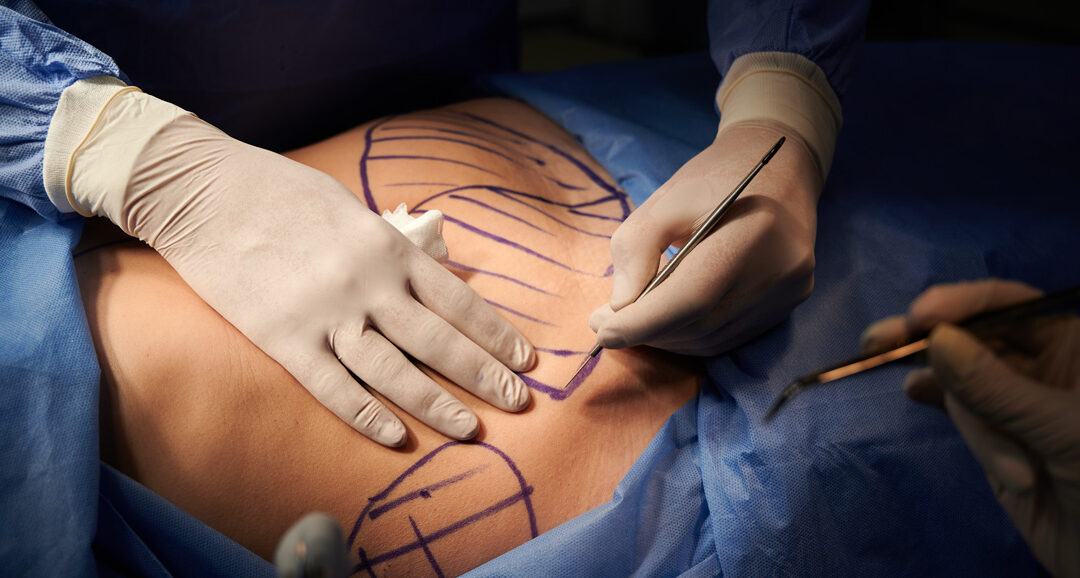
Why Should Dr. John Q. Cook Be Your Choice for a Tummy Tuck Surgeon?
Searching for a plastic surgeon in Chicago brings up literally of thousands of results. The Chicago area is large, so some of these providers will be closer to you, while others will be more of a drive away. When it comes to choosing a plastic surgeon for something...

Tummy Tuck 101: Answering the Most Common Questions for First-Time Patients
Does a tummy tuck remove fat or just skin? Our Chicago-based team often hears this question from patients who are interested in plastic surgery. If you’re considering the procedure formally known as an abdominoplasty, it’s normal to have plenty of questions about what...
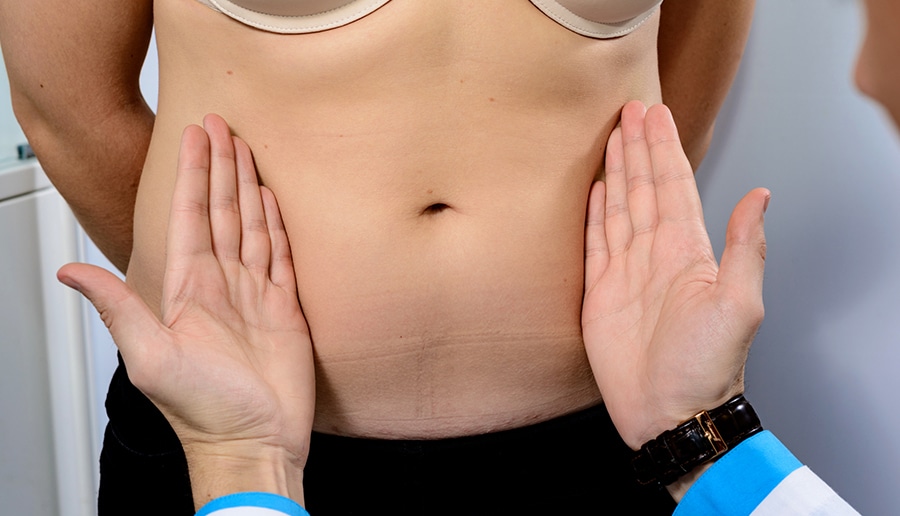
The Top 5 Benefits of a Tummy Tuck
It can be challenging to lose extra fat around the midsection. For many people, this region is their least favorite body area. Even when diet and exercise are successful, loose skin can remain, creating a flabby look. Though not a substitute for weight loss and a...

The Ultimate Tummy Tuck Recovery Guide
We’re going to be completely honest with you: recovering from a tummy tuck can be frustrating. While visions of a slimmer profile dance in your head, you will be swollen and tender and you may find it difficult stand up straight. But those visions will become a...
High Lateral Tension Abdominoplasty Is My Preferred Technique
As a plastic surgeon who is interested in refining abdominal contour, I divide my practice into two eras: the time before I used the high lateral tension technique and everything since then. In the earlier era, the abdominoplasty procedure frequently left me a little disappointed. I could tighten the skin of the abdomen, but I didn’t feel I necessarily was creating a beautiful shape, such as I might be able to do with a face lift or a breast lift. Often the results seemed expressionless, lacking in form.
Tummy Tuck Techniques
I offer my Chicago patients a wide range of Tummy Tuck (Abdominoplasty) techniques. Each patient has a unique anatomy and specific set of personal needs. It is important to explore these issues so that we can select the best possible option. I share several patient experiences per the different techniques I offer in this article.
Dr. Cook's Practice Blog
Explore our practice blog to learn more about non-surgical treatments and plastic surgery procedures available at The Whole Beauty® Institute. Get tips and advice, and discover new ways to improve your health and beauty.
Dr. Cook's HealthGems Blog
Dr. John Q. Cook shares his personal thoughts on well-being, quality of life, and more in HealthGems—from his decades of experience in the industry, studying and working with advanced technology and techniques.
Whole Beauty Skincare
SkinShopMD.com was created by Board-Certified plastic surgeon, Dr. John Q. Cook, as a trusted source for high quality, medical-grade skincare products to protect and rejuvenate your skin.

Educational Information
Get informed about cosmetic plastic surgery procedures and rejuvenating non-surgical treatments to help you make informed decisions about your desired treatment based on your aesthetic goals.
Testimonial and Practice Videos
Schedule a Consultation
Schedule a consultation with board-certified plastic surgeon, John Q. Cook, M.D., to learn more about plastic surgery solutions that may be right for you based on your aesthetic goals.
"*" indicates required fields
Our Office Locations
Our locations in the Gold Coast of Chicago and Winnetka in the North Shore reflect our commitment to convenient and discrete concierge-level service.
Chicago Office
737 North Michigan Ave., Suite 760 Chicago IL 60611 (312) 751-2112 Entrance at 151 E. Chicago Avenue
Winnetka Office
118 Green Bay Road Winnetka IL 60093 (847) 446-7562
Located directly across from Indian Hill Metra Station







